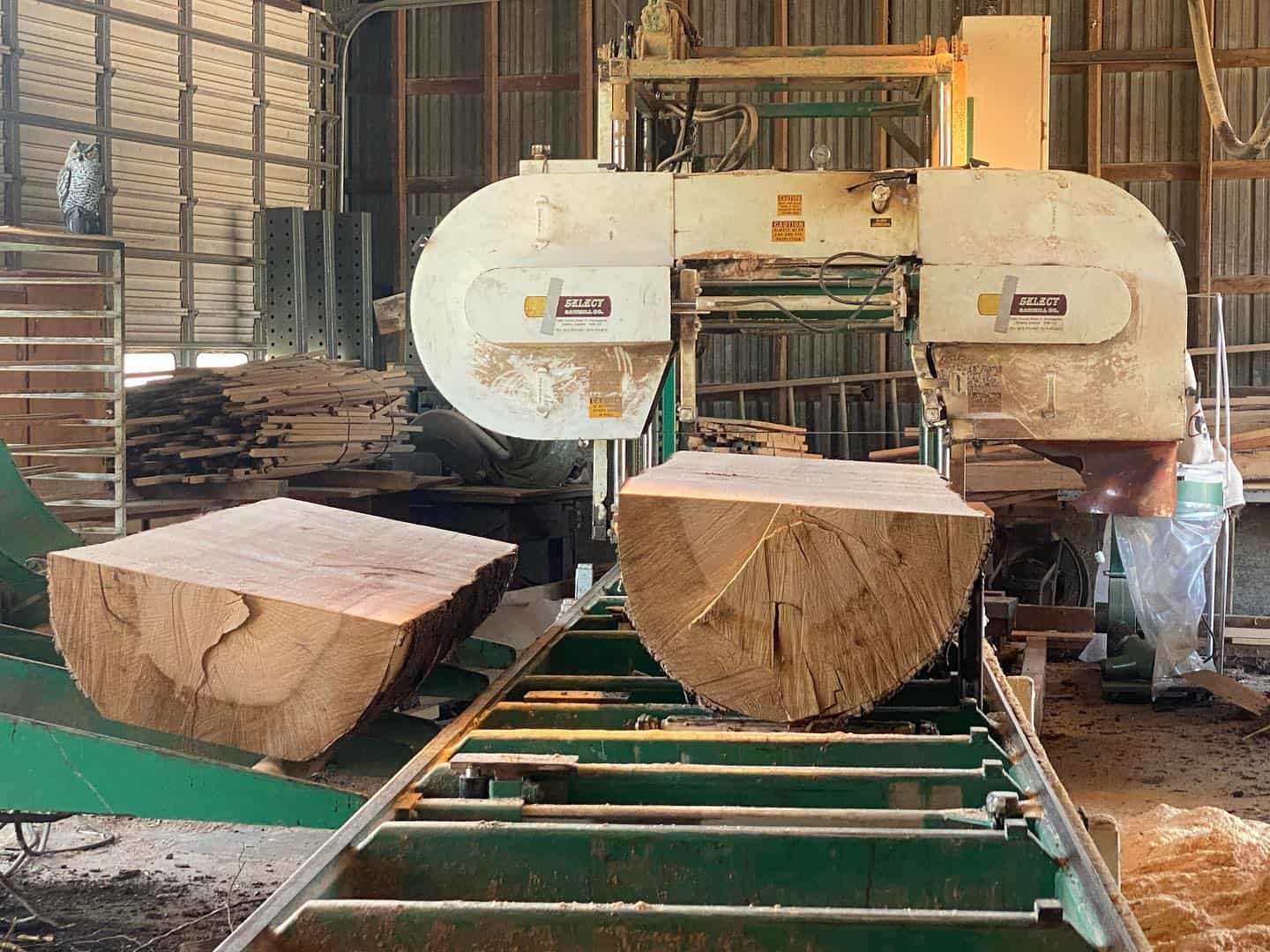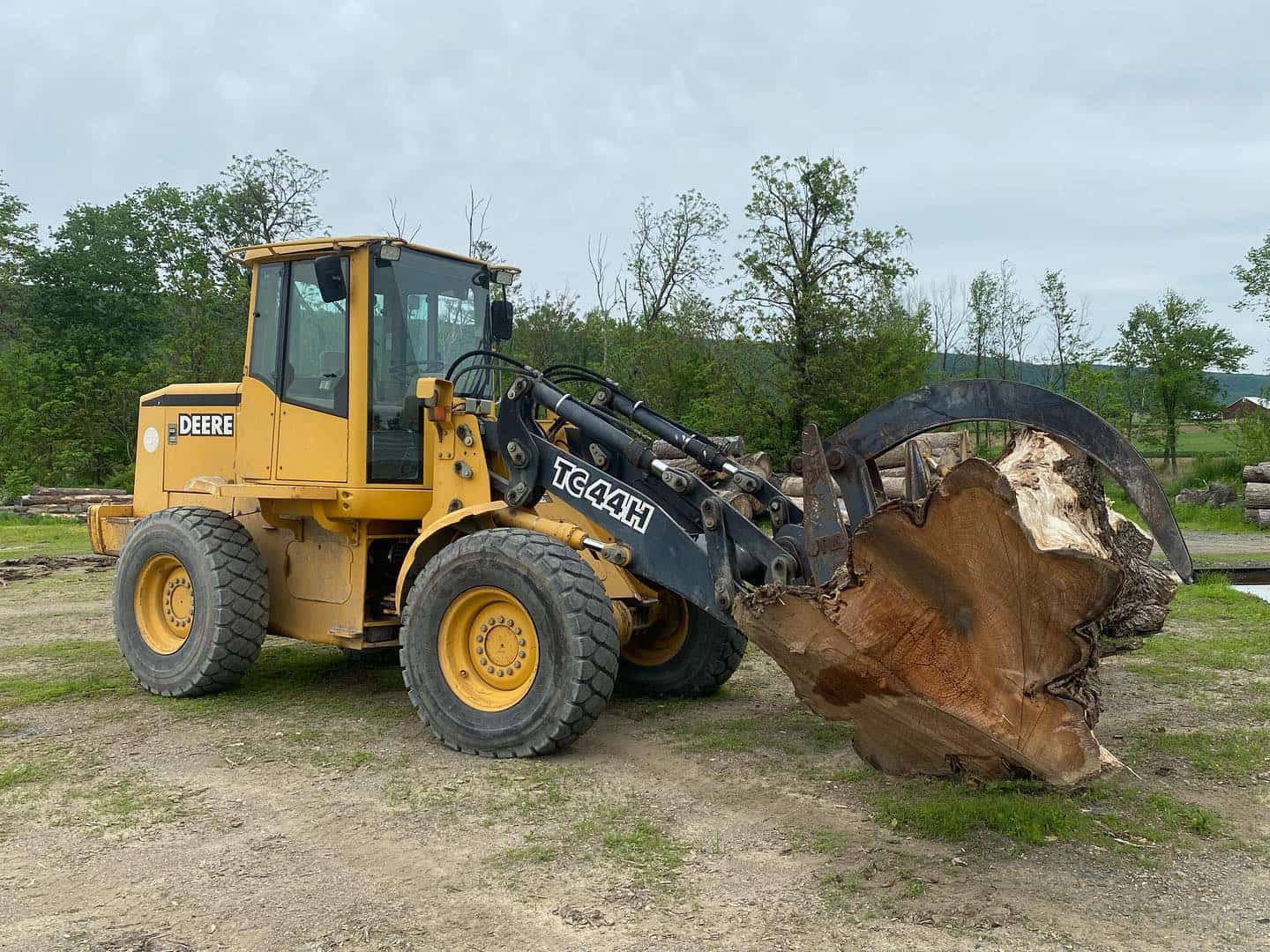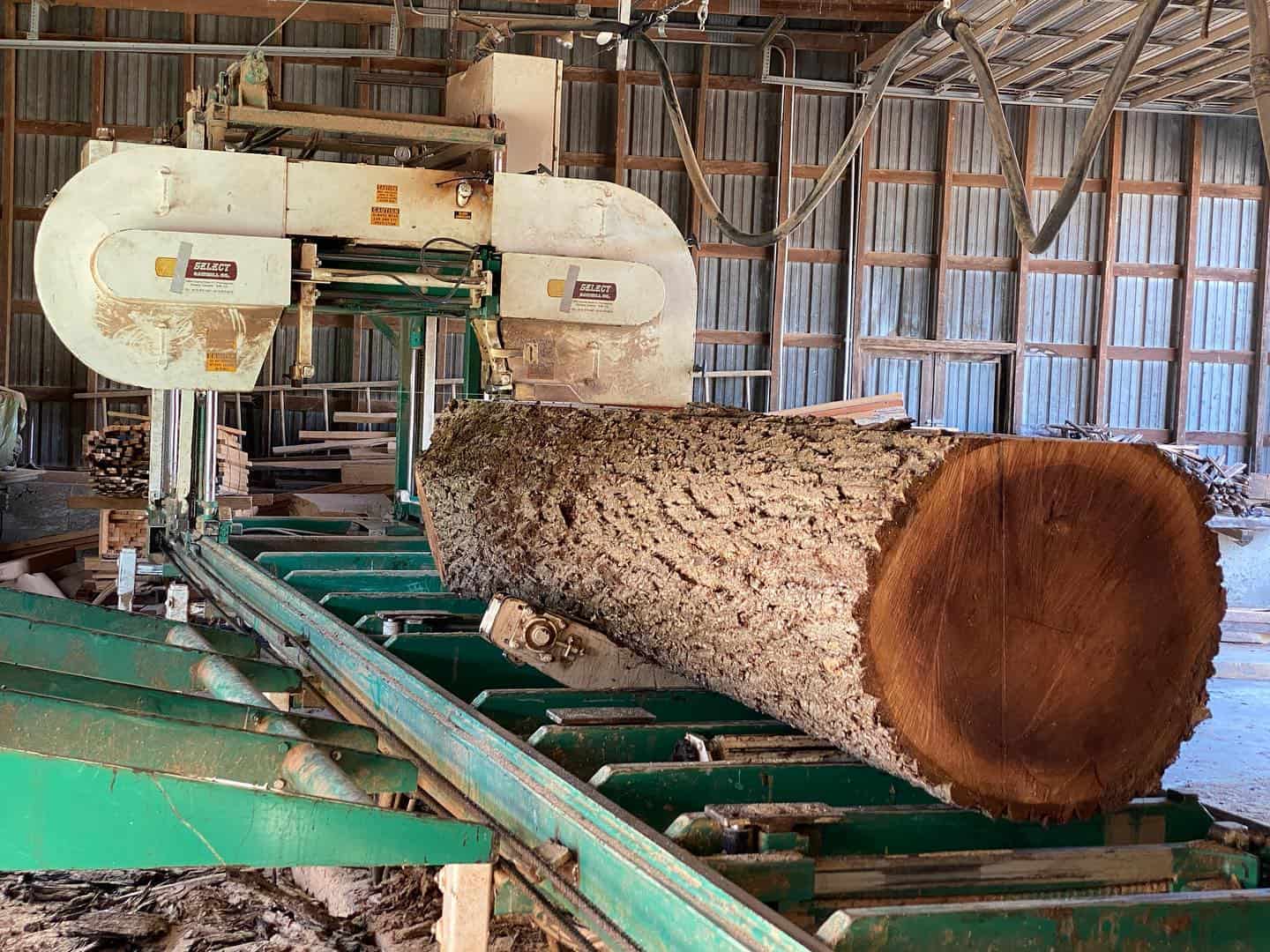The Sawmill
What Can Bailey Do For You?
The legacy of sawmilling at Bailey Wood Products dates back to 1928 when founder Howard Bailey began logging and sawmilling to pay the mortgage on his newly purchased farm. The operation has remained on a portion of that piece of property today. Much has changed since those early days. The equipment has become much more modern. The one thing that has remained constant is the care that goes into producing well-manufactured lumber at Bailey Wood Products. The Bailey name has been known for decades as a source for great hardwood lumber and friendly service.
The process begins with timber that is harvested primarily from private woodlots. Our suppliers are SFI ( Sustainable Forestry Initiative) Trained Loggers. Our other non-native species are purchased from wholesale importers. We also purchase selected logs from other mills and other veneer and log buyers to be custom sawn on our mill for special needs. We also carry a few species of lumber that are FSC certified.
Our logs are purchased based on the net volume of board feet they will yield when sawn and their respective grade. The grade is determined by the amount of clear defect-free sides each log has. After grading they are sorted based upon species and length in our log yard for storage prior to milling.
Prior to milling each log is debarked on our log debarking machine. This is done to remove all of the dirt and debris that got embedded in the bark as a result of harvesting. This step is key to maintaining a sharp blade on the sawmill. We also generate a raw bark by-product that is sold for landscape mulch. After debarking each log is checked for an embedded metal with a metal detector. This is a safeguard against blade damage and extends the cutting life of each blade.
Upon completion of debarking and metal detection, each log is ready for processing on our 36” double-cut bandsaw. The sawyer processes the log to yield the clearest lumber and highest grade with each saw pass through the log. When certain dimensions are required the computerized setworks aids the sawyer. We also produce flitch cut slabs that are stacked in a boule (their original orientation in the log) for book matching or other special needs. We also quarter saw certain species for the stable lumber it produces and to bring out the beautiful figuring and grain. The bandsaw mill is capable of sawing logs 4’ to 24’ in length. This allows us to produce shorts from crotch sections and other figured short logs all the way up to long timbers.
After being sawn to the desired dimension, thickness, or specially sawn for grade and figure the resulting lumber is edged and trimmed. We also produce live edge lumber where the natural edge of the piece is retained for tabletops or other specialty applications.
Frequently Asked Questions About Custom Millwork
What Is The Largest Log You Can Mill?
Put your answer here. Let it be complete, but not paragraphs of text. You want them to call in to talk to you about the products. Put your answer here. Let it be complete, but not paragraphs of text. You want them to call in to talk to you about the products. Put your answer here. Let it be complete, but not paragraphs of text. You want them to call in to talk to you about the products.
I Have Logs. Can You Pick Them Up To Mill Them?
Your content goes here. Edit or remove this text inline or in the module Content settings. You can also style every aspect of this content in the module Design settings and even apply custom CSS to this text in the module Advanced settings.
I Have Trees I Want Taken Down. Does Bailey Do That?
Your content goes here. Edit or remove this text inline or in the module Content settings. You can also style every aspect of this content in the module Design settings and even apply custom CSS to this text in the module Advanced settings.
How Long Does It Take To Get Kiln Dried Wood From A Freshly Milled Log?
Your content goes here. Edit or remove this text inline or in the module Content settings. You can also style every aspect of this content in the module Design settings and even apply custom CSS to this text in the module Advanced settings.
Do You Cut Custom Beams?
Your content goes here. Edit or remove this text inline or in the module Content settings. You can also style every aspect of this content in the module Design settings and even apply custom CSS to this text in the module Advanced settings.
Understanding Waste
After determining the exact board footage necessary for your project, add the waste factor to the exact measurement as a guideline to determine the amount of rough lumber needed for construction.
The following species should add an additional 20% to the exact measurement.
African Mahogany, Sapele, Bubinga, Padauk, Bloodwood, Yellowheart, Purpleheart, and Lacewood
The following species should add an additional 25% to the exact measurement.
Red Oak, White Oak, Poplar, Ash, Birch, Pine, Sassafras, Basswood, Catalpa, Sycamore, Wenge, African Cherry (Makore), Brazilian Cherry (Jatoba), Western Red Cedar, Spanish Cedar
Hard and Soft Maple
Our Maple is selected for Sap on a minimum of one face, and a lot of the stock is white on both faces. Unless the stock is listed as unselected for color, where there is a high percentage of brown heartwood, we recommend using a 25% waste factor.
Hickory
Hickory coloration varies from light sap white to many hues of brown intermixed with the light sap color. Our stock varies from kiln load to kiln load. If you are looking for a greater amount of one color over another it is best to call and inquire about the variation of the coloration of the stock in inventory at present. Depending on the coloration of your finished product we would recommend using a waste factor of 30% - 50% depending upon the color variation you are looking for in the finished product. Hickory is also very difficult to machine due to its hard stringy grain. Based upon its working properties it is also advisable to make sure that you have some extra material in case of tear out during machining.
Zebrawood
For Zebrawood we recommend a 35% waste factor.
Aromatic Cedar
Aromatic Cedar is sold on the grade of #1C and better. Within this grade, bark pockets are allowed as long as the required cuttings are within the piece of lumber to allow it to make the #1C and better grade. Tight knots are allowed and interspersed throughout the lumber in this grade. If you are looking for clear lumber, this is not a species to choose. Based on the characteristics of Aromatic Cedar we recommend using a 40% - 50% waste factor when building projects from the material. The bark pockets and presence of knots, especially when creating larger glued panels for blanket chests, will make it necessary for the user to lean more toward the 50% figure.
Black Cherry
Our Cherry lumber is sorted for color. The stock is Red heartwood on one face minimum and most is 50% Red heartwood on the reverse side. The Cherry is Pennsylvania stock coming from the northern part of Pennsylvania and occasionally into New York. We strive to maintain consistency of the color from kiln load to kiln load. We also purchase stock in that is sorted to our color specifications in specific widths and occasionally specific lengths. Based on the quality of the stock we recommend using a 35% waste factor when calculating your material needs in Cherry. If you have a project where you can use some percentage of sapwood, you can slightly reduce the waste factor.
Walnut
Our Walnut is sold two different ways, unsteamed and steamed. The steaming process darkens the light sapwood to match the darker heartwood much more closely than that of unsteamed. Walnut that is unsteamed has the lighter sapwood present on the edges of the outer edges of the lumber produced and on one side of the resulting lumber in the first few boards produced from each log. Depending on your ability to use sapwood in the unsteamed lumber we recommend using a waste factor of 40% - 50% for unsteamed. In steamed lumber figure a waste factor of 35%. For those that like a more natural look to their Walnut I recommend the unsteamed. The characteristics of each tree show up more vividly in the unsteamed than the steamed, especially when finished with a hand-rubbed finish.
The National Hardwood Lumber Grading Rules for Walnut are different than that of other species such as Cherry and Oak. An FAS board in Walnut will be similar in appearance to that of a #1C board of the other species due to the smaller cutting unit sizes. Keep that in mind when purchasing Walnut for a project where you are in need of defect-free cuttings. When we develop clear Walnut lumber we will select that out and keep it separate from the FAS grade material to aid those woodworkers in need of clear lumber.
Figured Lumber (Curly Maple, Curly Cherry, Wormy Curly Maple, Figured Makore, Quartersawn Sycamore, Flame Birch)
When working with figured materials, we recommend using a greater waste factor than that listed depending on how exact you wish to match grain and figure patterns in the lumber.



